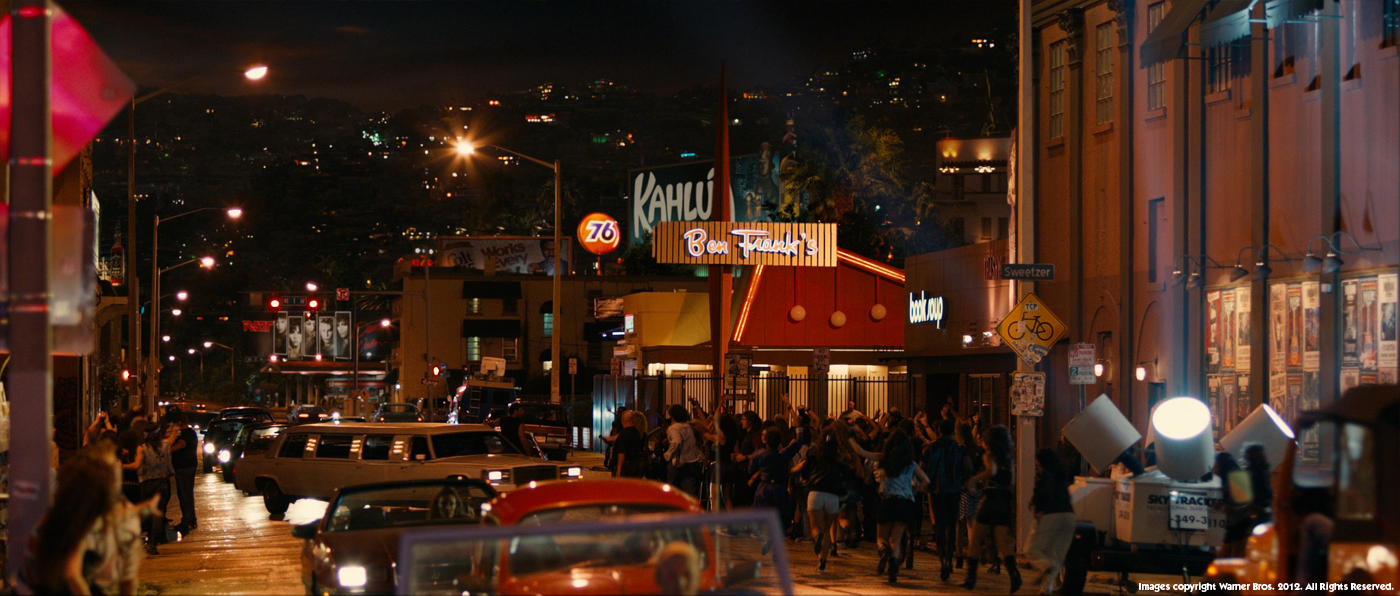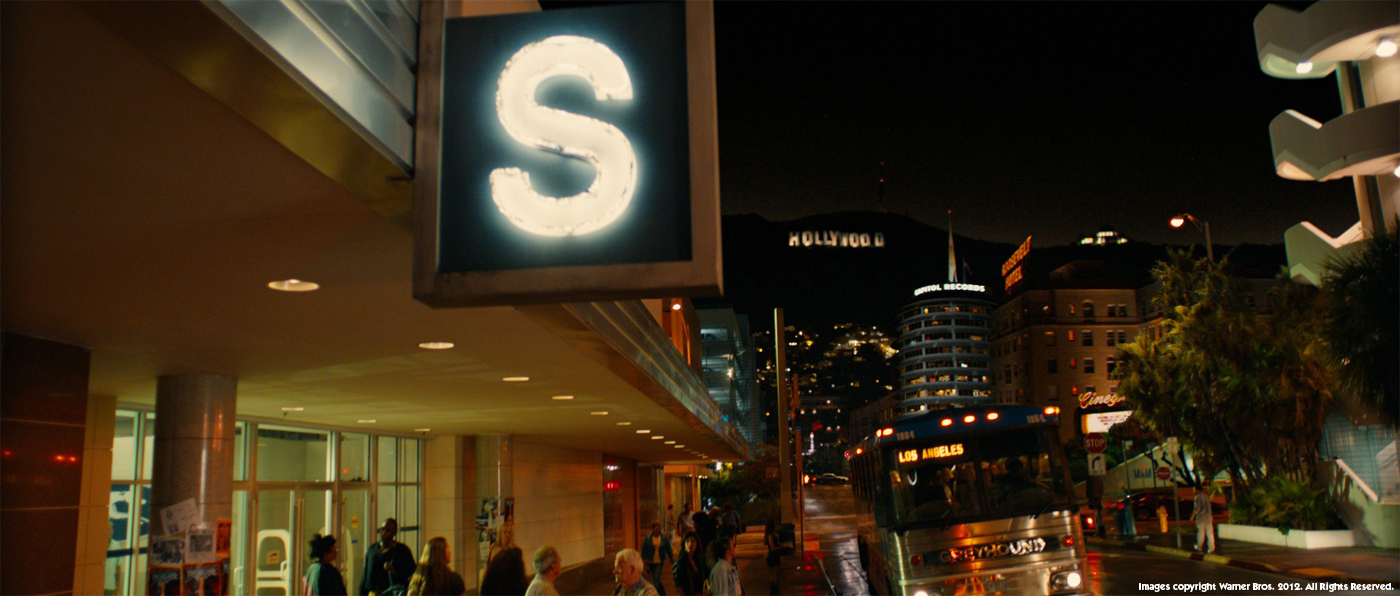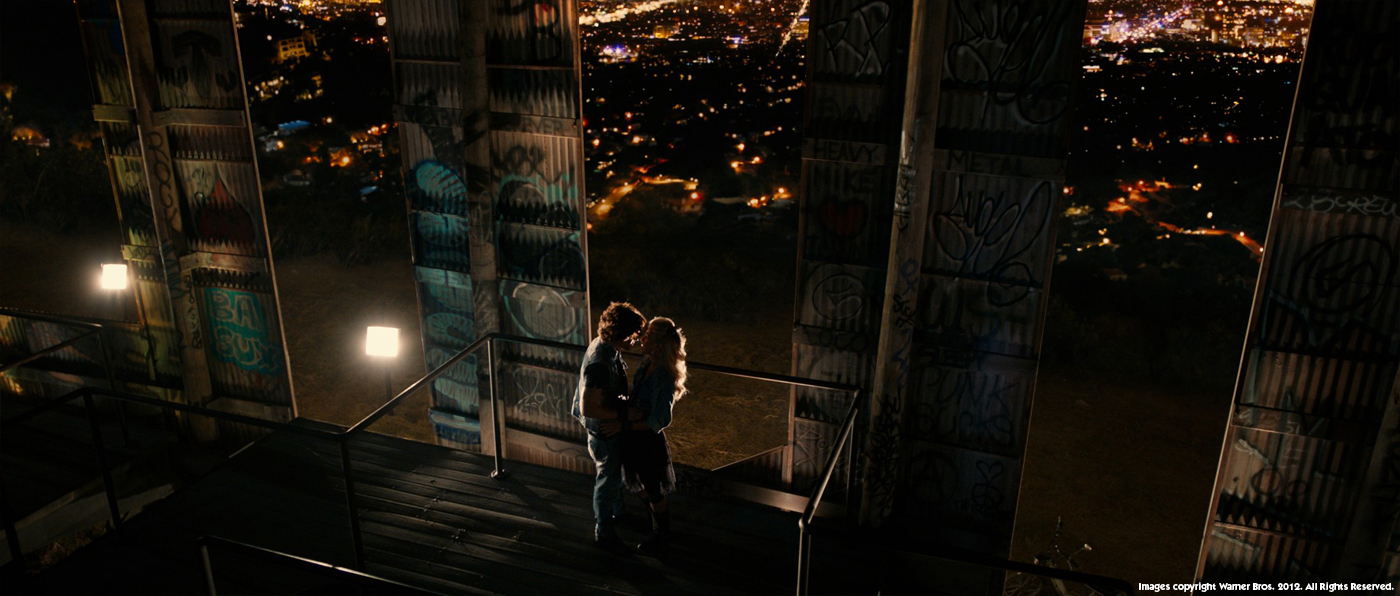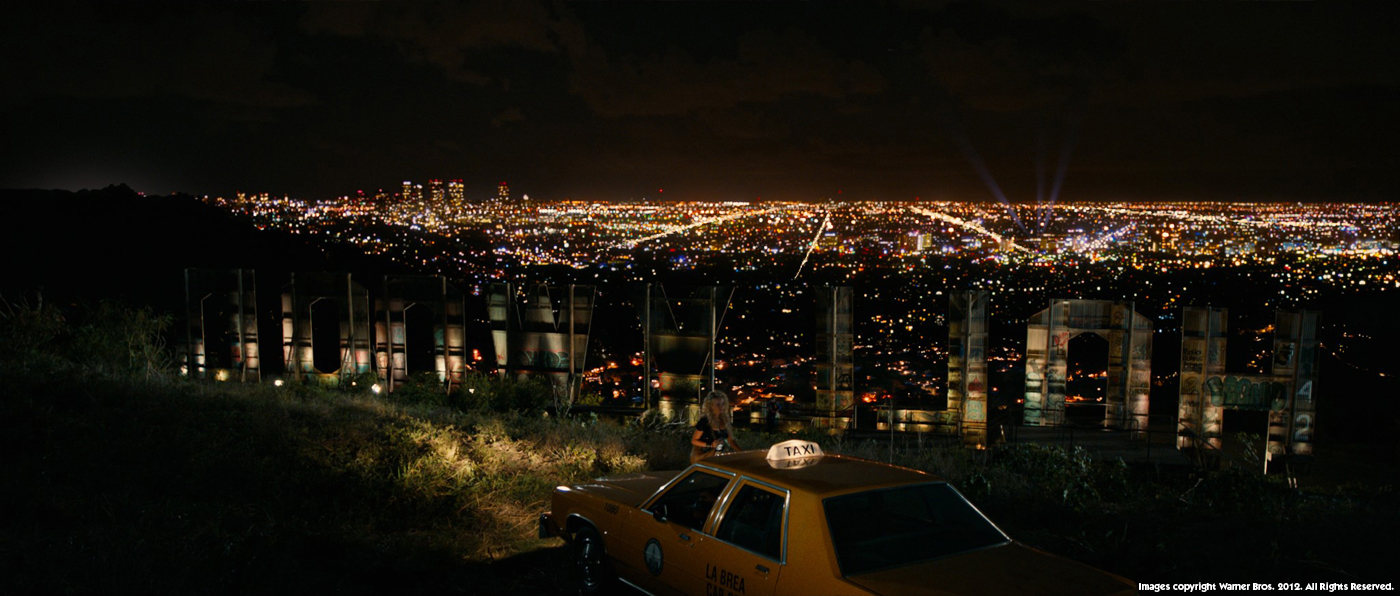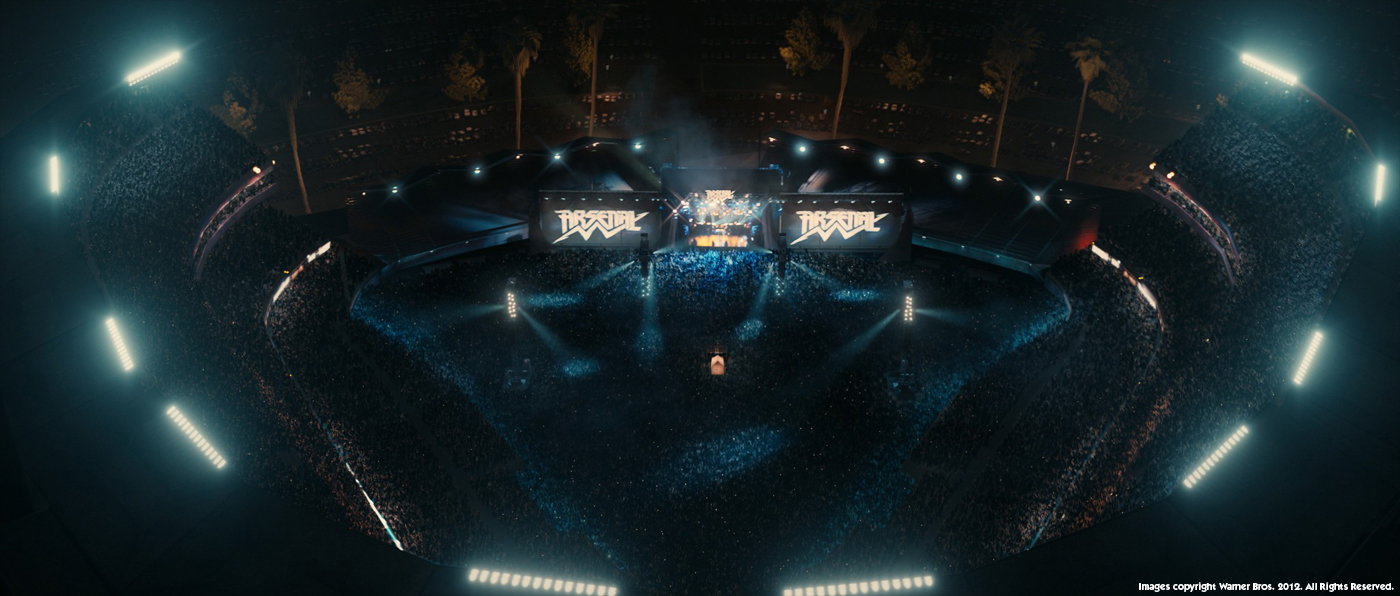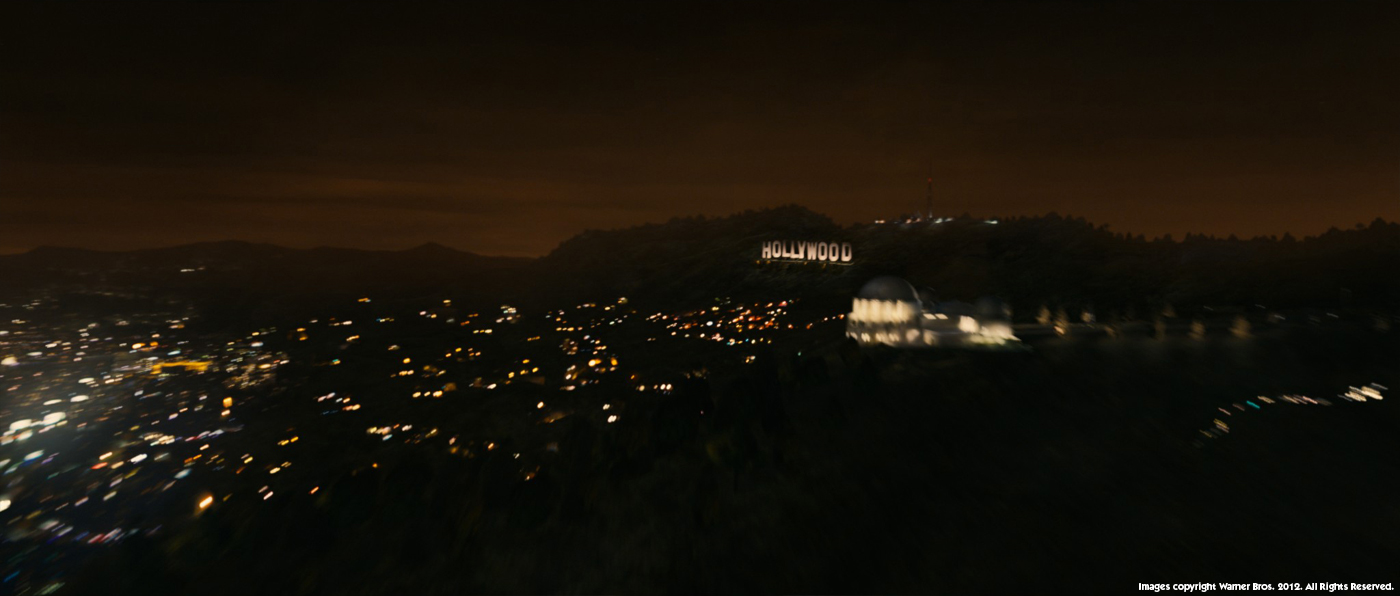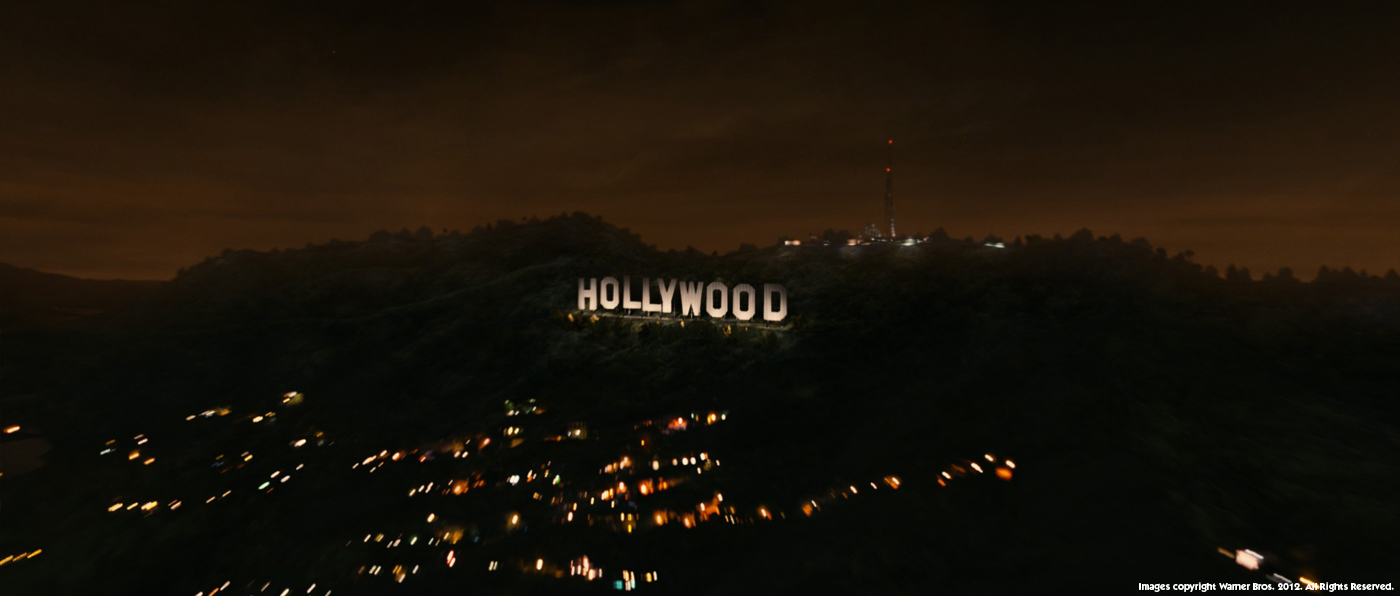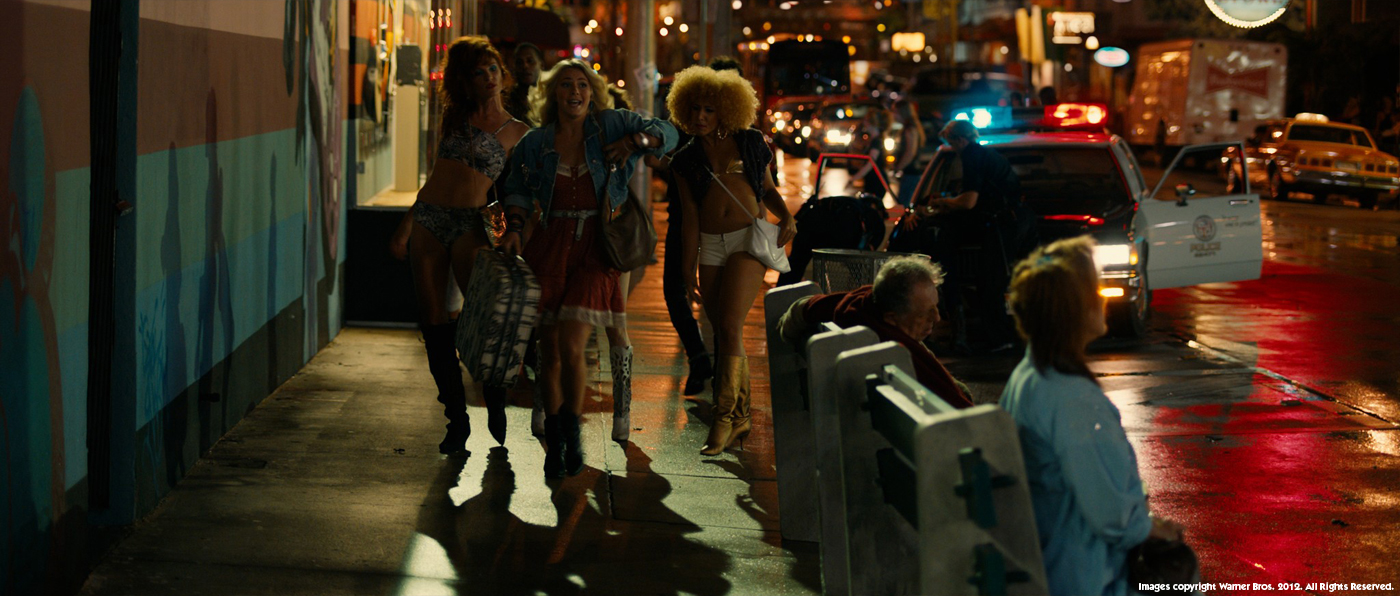Jay Barton worked over 14 years at Digital Domain and participated in many projects such as STAR TREK: NEMESIS or TRON LEGACY. He oversaw the effects of X-MEN FIRST CLASS. He speaks here about the invisible effects for ROCK OF AGES.
What is your background?
After being exposed to 3D design software while studying Industrial Design, I decided to pursue a career in 3D computer animation. I bought a computer and software and was, for the most part, self taught. Some small freelance gigs led to me being contacted by a law firm in the mid 90’s where I did scientific and geological animations for court presentations. I took a break to come work at Digital Domain for a couple of months to help out on a large car commercial campaign and stayed for another 14 years….
How did Digital Domain get involved on this show?
We have a great relationship with Warner Brothers so when they reached out to us to help out on this show we were more than happy to. This was exciting for us as we had never worked on a musical before. It’s great to have the opportunity to work on a variety of productions across the industry.
How was the collaboration with director Adam Shankman?
It was great. Though Adam had some very specific ideas, we were allowed the space to mock up ideas and present options. He was a lot of fun to work with both on set as well as during the post process.
What was his approach about the visual effects?
As he had spent much of his youth in the Hollywood area, it was important that people recognize certain landmarks, even things that weren’t necessarily featured in the film. Since we wanted to be as unobtrusive as possible on set, it was important that we gained his trust early on so he didn’t have to “worry” about what the final product would look like.
What Digital Domain have done on the show?
Digital Domain’s work on ROCK OF AGES is classic ‘invisible effects’ – digital artistry in the service of story. We turned locations in and around Miami into 1980’s Hollywood, including the iconic Sunset Strip and Hollywood sign. We also extended crowds and sets for two concert sequences and created an all-CG shot of a stadium filled with screaming fans that pulls out to an aerial view of Los Angeles.
Can you tell us in details how you recreated the 1980’s Hollywood?
The scenes of Hollywood Boulevard were shot in Miami, in a vacant 3-block area that was set-dressed with signs and storefronts to look like the Sunset Strip in the 80s. We were tasked with completing the full picture, and worked closely with Producer Garret Grant to execute on Adam Shankman’s vision for the location. We did extensive historical research, reviewing photos and identifying iconic rock bands, advertisements, restaurants, stores and other pop culture icons of the time to recreate the area authentically. We removed the high rises of downtown Miami and replaced them with digital recreations of the Hollywood Hills and Hollywood sign, Capitol Records building and stereotypical Hollywood landscapes; which was about two visual miles of CG imagery.
What indications and references did you received from the director for the 1980’s Hollywood?
The first order of business on a film like this is finding a suitable location to shoot. Modern day Hollywood was out due to modernization as well as cost to redress and shoot. Once the location was determined and dressing was underway, we started discussions with Adam and the production designer. With the abbreviated Sunset Boulevard that was necessary to allow all the action to take place within these three available blocks there was no “right” Hollywood layout. Using books and reference photography from both today and the 80’s we started assembling the puzzle pieces that would complete the picture and give a period-correct feel.
Was there green screen on-set or did you rely on roto?
We used a lot of greenscreen in the crowd creation sequences in particular. The environments for Sunset Strip and the Hollywood sign sequence were all roto.
Several times, Sherrie and Drew meets on the Hollywood sign. Can you tell us more about your work on those shots?
The scenes featuring Sherrie (Julianne Hough) and Drew (Diego Boneta) meeting at the Hollywood sign were shot on a small hillside outside of Miami, using a ½ scale physical model. Our artists extended the hill to make it look much taller/larger than it was, and replaced the small town on the horizon with the lights of Hollywood and vistas of the LA basin.
How did you manage the various set extensions and especially those of Stacee Jaxx concerts?
The stage location was a small concert arena in Florida where they were able to entice about one thousand extras in 80’s attire to appear, I believe through radio advertising. The arena was lit for the performances on stage and the light fell off across the crowd, which was pushed up in front of the stage. Through roto of the plates, we were able to extract the actors and crowd and replace all backgrounds with either a much larger full arena in one sequence and a full 50,000-seat stadium in another. The base geometry for each location, though based on actual places, was highly art directed. Once the layouts were approved we used our crowd generation tools in Nuke to fill them with life.
Can you explain to us the impressive final shot that start from the stage and ends over the Hollywood sign?
This started with a plate of the actors on stage performing to our 1,000 extras. There were many different timings and camera moves done as we knew the idea of the shot, but not how it would work within the edit beats to take us out of the film. During the editorial process a take shot on a techno arm retracting and booming up was selected for timing within the song and performance. Our challenge was to do a hand off to an entirely CG move that allowed the camera to get from the stadium all the way to the Hollywood sign, at which point the credits would roll. We developed several different scenarios where we played with camera moves and speed along with modified geography of Los Angeles and the Hollywood hills to find an elegant solution. These landmarks are quite far away in reality so we created a synthetic CGI landscape using both projected photography and traditional modeling texturing and lighting to create our designer LA basin. Again our crowd system came in to play to populate the entire digital stadium.
Can you tell us in details the way you create the CG crowd?
The movie features two arena concert scenes – one in a stadium based on LA’s Dodger Stadium, and one that is part of a dream sequence that Stacee Jax (Tom Cruise) has in an empty Bourbon Room lounge. As he launches into his performance, in his mind’s eye, the venue becomes an arena full of screaming fans. Both scenes were shot in a small Miami arena with 1,000 extras. Building on a technique created for REAL STEEL, Digital Domain extended that group to create natural-feeling, photo-real looking crowds of 3,000 (Bourbon Room) and 60,000 (big stadium) using just 45 live performers.
Our CG Supervisor Nikos Kalatsidis and 3D artist Scott Edelstein drove the process. They shot each performer against a green screen going through choreographed movements – bopping to the beat of the music, clapping their hands, getting more energetic, leaping to their feet, air drumming, cheering, fist-pumping, etc. They were shot with three HD cameras in five takes from different heights, rotating from four angles; head on, ¾ facing the camera, ¾ rear, and straight from behind. Those 15 takes were pulled into the editing system and separated out 15 times, for all 45 people. A proprietary software tool written in Nuke managed the footage and allowed for easy replication of crowds with specific characteristics, allowing us to choose the right performance for the timing and produce anywhere from a handful of background spectators to tens of thousands – all using a system that was both easy to manage and required fewer computing resources than a traditional 3D solution.
What was the biggest challenge on this project and how did you achieve it?
In this case, it was the budget. As most projects do, the scope of this project grew considerably through editing and post production. We really don’t like to say “no” so we had to find creative solutions to bring as much of Adam’s vision to the screen as humanly possible within the scope of the budget and schedule.
What do you keep from this experience?
The world of VFX is not all spaceships, robots and natural disasters. Working on a musical, and especially a comedy as funny as this one, was a great experience.
How long have you worked on this film?
Digital Domain’s work on ROCK OF AGES took 11 months.
How many shots have you done?
237 shots.
What was the size of your team?
There were more than 20 people locally, and an additional 50 abroad that contributed to the project.
What is your next project?
I’m working right now on 47 RONIN, directed by Carl Rinsch, which comes out in February.
Can you tell us the four movies that have given to you the passion for cinema?
It would be impossible to list only four. The magic of the cinema is how it can transport the viewer to unimaginable places and generate profound feelings.
A big thanks for your time.
// WANT TO KNOW MORE?
– Digital Domain: Dedicated page about ROCK OF AGES on Digital Domain website.
© Vincent Frei – The Art of VFX – 2012


